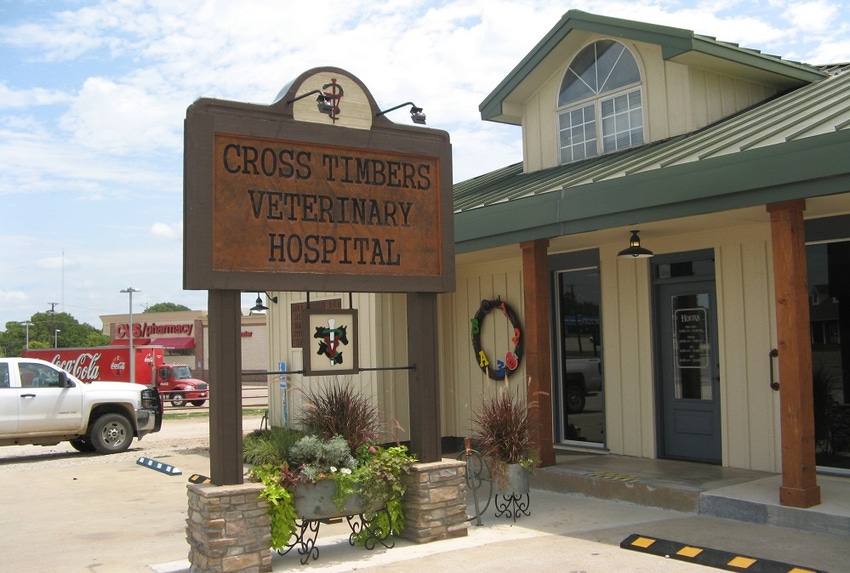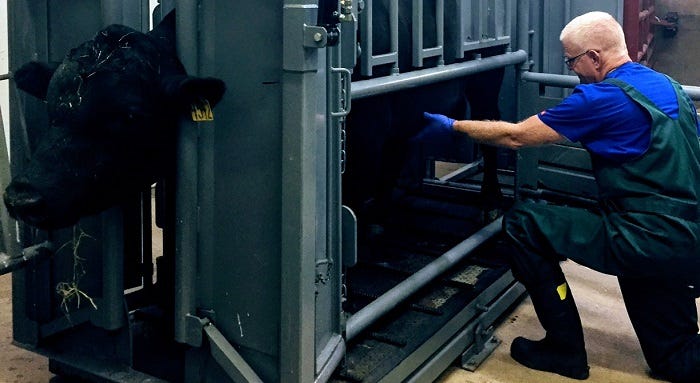Building a system to help beef producers, older veterinarians, new veterinarians and the rural economy.
December 8, 2017

By Robert Fears
Unmet market needs offer new business opportunities, but they are not always easy to recognize nor to design a business plan that exploits the possibilities.
Dr. Arn Anderson, owner and operator of Cross Timbers Veterinary Hospital correctly identified a market opportunity and put in place a market plan to fill the need.
“Every time I went to a meeting, people talked about the serious shortage of large-animal practitioners,” says Anderson. “A majority of the current vet students were raised in cities, and that is where they are the most comfortable. They are moving into areas of concentrated populations and establishing small-animal practices.
"There are very few graduates who are willing to establish a practice in isolated rural areas, so when large animal veterinarians quit practicing, there is no one to replace them. This is causing a real problem for livestock producers, so I decided to do something about it.”
A plan
Here's how his plan works.
When veterinarians in the cross timbers area of Texas retire or close their businesses due to injuries or sickness, Anderson buys their clinics. These businesses have been established for a long time and usually need updating. Anderson and his partners remodel the clinics and install new state-of-the art equipment. He then interviews and hires a graduating vet to operate the business. The young graduates are given a guaranteed salary and fringe benefits such as vacations, sick leave and an insurance program. They are hired with a commitment that they will eventually buy into their clinic.
“On the day the new vets first step into their clinics, they are involved in management,” said Anderson. “They are responsible for hiring their staff, managing inventory, keeping their accounts receivable current, making a profit, establishing good customer relations and treating both large and small animals humanely and as effectively as possible. Their duties involve establishment of veterinary-client-patient-relationships (VCPR), education on preventive health care, development of animal health plans and advisement on overall livestock management programs."
However, it appears only a small number of new veterinarians are interested in starting out with this much responsibility.
Few takers?
"During a presentation to a vet class at Texas A&M, I asked the approximately 100 students if they would like the opportunity of opening their own clinic immediately after graduation," Anderson says. "Only two students held up their hands. Remainder of the class preferred to intern under an experienced veterinarian before going out on their own.”
To those who buy in, the Anderson plan offers both an animal hospital and internship. Anderson and the other vets in the system stay in contact with each other through text messages and telephone calls. If someone needs advice on how to treat an animal, he or she can get it quickly.
Aid with surgeries or complex treatments is supplied through Real-Time software. The software allows filming of the procedure so step-by-step directions can be given by the assisting veterinarian.
“Weekly conference calls are conducted where questions are asked and discussed by the entire group,” Anderson explains. “These calls are learning exercises for all of us. The more experienced veterinarians discuss methods of delivering top-level animal care service while the new vets contribute the latest, up-to-date information on pain management and government regulations.”
New veterinarians are also provided help on the business side of the practices. Copies of their financial records are electronically transmitted to the system hub in Bowie, Texas, every Friday. They are examined carefully and alerts are issued if there are problems. Business seminars and case studies are conducted periodically to provide further training.

Arn Anderson performs a trichomoniasis test on a bull at his clinic in northern Texas.
Continued support
“It takes about three years to establish a good vet practice,” Anderson says. “After a veterinarian buys into their clinic they remain in our network. Practitioners within the network not only share technology, but also specialized equipment. If a clinic is short of personnel due to some unexpected event, someone is sent from another clinic within the network to temporarily fill the gap. When an unexpected low inventory of a certain item occurs in a clinic, it is restocked from another location. We all work together as a team.”
Anderson has helped establish clinics in the Texas towns of Nocona, Graham and Olney. The Olney practice started a veterinary clinic in Seymour and was a partner in the establishment of the Graham vet hospital. Anderson personally operates the animal hospital in Bowie.
Mobile clinics
To provide animal care to towns too small to support a veterinarian, Anderson and Dr. Keelan Lewis, who manages the Olney clinic, initiated a mobile vet clinic. It spends a day each month in the small towns of Munday, Alvord and Archer City. Veterinarians within the network take turns manning the clinic.
The network continues to grow because a serious market need is being filled. A second benefit is that graduate veterinarians are given an opportunity to operate a business.
Fears writes from Georgetown, Texas.
You May Also Like



